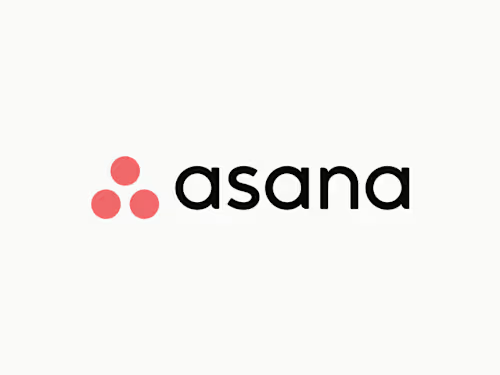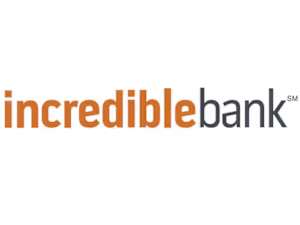
Asana Consultant: Boost efficiency with a measurable ROI
Contact for pricing
About this service
Summary
FAQs
What are the key benefits of implementing asana in a government agency?
Implementing asana in government agencies can significantly enhance transparency, accountability, and efficiency in project management and daily operations. Key benefits include streamlined communication across departments, centralized documentation, and improved tracking of deadlines and milestones. Asana’s customizable features allow different departments and agencies to adapt the tool to fit specific workflows and regulatory requirements, facilitating better compliance and reporting.
What are the advantages of using asana for operations management?
Asana optimizes operations management by enhancing the planning, coordination, and execution of projects. Advantages include real-time visibility into project status, automated task assignments based on timelines and priorities, and integration capabilities with existing software. This leads to reduced manual workloads and improved operational efficiencies. asana’s dashboard and reporting tools also offer insights into performance metrics, helping managers make data-driven decisions to streamline operations further.
How cost-effective is asana for small to medium-sized businesses?
asana is highly cost-effective for small to medium-sized businesses due to its scalable pricing models, which cater to varying team sizes and budgets. The platform helps reduce overhead costs by streamlining project management and reducing the need for multiple tools. asana’s ability to improve team efficiency and reduce project turnaround times can lead to significant cost savings over time, making it a valuable investment for growing businesses seeking to maximize their resources.
What change management processes do you offer for enterprise adoption?
Experience Innovation employs a neuroscience-informed, lean change management approach to facilitate the successful enterprise adoption of asana. Our process is designed to be agile and responsive, focusing on generating quick wins and sustainable long-term adoption within your organization. Here's how we ensure a smooth transition: Initial Assessment and Stakeholder Mapping: We begin with a comprehensive assessment to understand your organization's unique dynamics and identify key stakeholders. This step helps us tailor our approach to your needs and challenges. Strategic Engagement Workshops: Our workshops engage all levels of the organization, from executive sponsors to end-users, ensuring alignment and buy-in. These sessions are designed to highlight the strategic value of asana, addressing how it can resolve pain points and enhance operational efficiency. Customized Communication Plans: We develop communication strategies that are clear, frequent, and tailored to various audience segments within the enterprise. This ensures everyone is informed, involved, and motivated throughout the adoption process. Lean Training Programs: Our training sessions are built around lean principles, focusing on practical, hands-on learning experiences. We provide just-in-time training that is directly applicable, reducing downtime and accelerating proficiency with asana. Iterative Implementation and Feedback Loops: Adoption is managed through iterative cycles that allow for continuous refinement based on real-time feedback from users. This approach helps quickly resolve issues, adapt to changing needs, and ensure that the adoption progresses effectively. Sustained Support and Kaizen Events: Post-implementation, we continue to support your organization with regular check-ins and kaizen (continuous improvement) events that encourage ongoing refinement and optimization of asana usage. This not only helps in solidifying the changes but also promotes a culture of continuous improvement and innovation. Impact Measurement and Adjustment: We regularly measure the impact of our change initiatives against predefined metrics to ensure that the adoption is delivering the expected benefits. Based on these insights, adjustments are made to optimize the outcomes and ROI from asana. This lean and adaptive change management strategy ensures that asana adoption is deeply integrated into your organization's workflows and culture, enhancing collaboration, efficiency, and overall project success.
What best practices do asana consultants recommend for optimizing workflows?
Optimizing workflows within asana requires a strategic approach that aligns technology with business processes. Experience Innovation consultants recommend the following best practices, structured as a checklist, to ensure your asana workflows are efficient, scalable, and aligned with your organizational goals: Define Clear Objectives: Start by clearly defining the objectives for each workflow. Understand what each process aims to achieve and ensure it aligns with your business strategy. Map Out Processes: Visually map out the entire workflow process. Identify critical stages, tasks, and responsibilities. This visual mapping helps in spotting redundancies and gaps in the workflow. Customize Fields and Tags: Utilize asana’s customization options like custom fields and tags to capture relevant data within tasks. This could include project stages, priority levels, or specific compliance-related information. Implement Task Templates: Create task templates for common project types or operations. These templates should include pre-set checklists, assigned roles, and due dates to ensure consistency and save time on project setup. Automate Routine Tasks: Identify repetitive tasks that can be automated. Use asana’s automation tools, such as Rules, to trigger specific actions like updating task statuses or reassigning tasks based on particular criteria. Integrate with Other Tools: Connect asana with other tools your team uses. For example, integrate with email, calendar, or communication tools to streamline the flow of information and reduce the need to switch between platforms. Regular Training and Feedback: Conduct regular training sessions to update the team on new features and best practices. You should collect feedback on the workflow’s effectiveness and user experience to identify areas for improvement. Monitor and Adjust KPIs: Define key performance indicators (KPIs) for each workflow and monitor them using asana’s reporting features. Regularly review these metrics to assess if the workflows achieve the intended outcomes and adjust as needed. Conduct Periodic Reviews: Schedule periodic reviews of the workflows to ensure they continue to meet the changing needs of the business. During these reviews, assess the efficiency of the workflow, discuss any challenges the team faces, and adjust the workflow to meet project goals better. Foster a Culture of Continuous Improvement: Encourage team members to suggest workflow improvements and innovations. Creating a culture that values continuous improvement can lead to more efficient processes and higher employee engagement. By following this checklist, your organization can ensure your asana workflows are optimized for current operations and scalable and adaptable to future changes. This comprehensive approach helps maximize efficiency and drives better project outcomes, positioning teams for success in a dynamic business environment.
How can we calculate the ROI of using asana in our organization?
Calculating the Return on Investment (ROI) for asana implementation within an organization involves a nuanced and multifaceted approach. Experience Innovation helps businesses articulate and quantify the financial and operational benefits of integrating asana into their systems. Here's how we systematically approach this evaluation: Baseline Measurement Establishment: We begin by collaboratively establishing baseline metrics before asana's integration. This involves assessing key performance indicators (KPIs) relevant to your business operations, such as project completion rates, operational costs, team productivity levels, and resource utilization rates. Establishing these baselines allows for a direct comparison post-implementation. Quantitative Benefits Analysis: Once asana is fully integrated, we perform a detailed analysis of the same KPIs to capture any improvements. This includes reduced project turnaround times, increased throughput, and better allocation of resources. For instance, if the time to complete projects decreases significantly while maintaining quality, the cost savings from faster turnaround and reduced labour hours can be directly quantified. Qualitative Benefits Assessment: Beyond tangible metrics, we evaluate qualitative improvements such as enhanced team collaboration, improved task visibility, and better stakeholder satisfaction. While more subjective, these aspects play a crucial role in long-term business success and can be assessed through surveys and feedback mechanisms pre- and post-implementation. Cost Reduction Analysis: We analyze cost savings achieved by reducing or eliminating other tools and platforms. Asana's ability to consolidate multiple tools into a single platform can significantly decrease overall software costs. Additionally, reduced meeting times and email communications, as facilitated by asana's streamlined communication features, also contribute to cost reductions. Investment Costs vs. Gains: The total cost of adopting asana—including subscription fees, training expenses, and consultancy fees—is weighed against the gains from increased efficiency and cost reductions. This comparison provides a clear picture of net savings or ROI. Long-Term Value Projection: We also project the long-term value of using asana by considering the scalability and flexibility of the platform. Asana's impact on future project scalability, its role in supporting business growth without proportionally increasing operational costs, and its ability to adapt to changing business needs are factored into the ROI calculation. Continuous Improvement Metrics: The ROI analysis is not seen as a one-time evaluation but as part of an ongoing improvement process. We establish ongoing metrics monitoring within asana to ensure that the system continues delivering value and that adjustments to workflows and processes continually enhance ROI. This comprehensive approach ensures that executives have a clear, detailed understanding of the financial and strategic value asana brings to their organization, supporting informed decision-making and strategic planning.
What lean principles do you apply to improve the efficiency and productivity of teams using asana?
Experience Innovation incorporates several key lean principles to optimize the efficiency and productivity of teams using asana. Our approach is designed to eliminate waste, streamline processes, and ensure that teams can focus on delivering value. Here’s how we apply these principles: Value Stream Mapping: We identify all the actions contributing to completing processes and projects within asana. This involves mapping out each step to visualize and understand where delays or unnecessary complexities exist. By identifying these value streams, we can target improvements more accurately. Continuous Flow: We optimize workflows in asana to ensure that tasks flow smoothly from one stage to the next without interruptions or bottlenecks. This is achieved by setting up automated rules within asana for task progression and using Kanban boards to visualize work in progress. This helps prevent overloading team members and keeps projects moving efficiently. Pull Systems: Instead of pushing tasks onto team members, we implement pull systems in asana. This means tasks are pulled by team members when they are ready to work on them, which aligns with their capacity. This approach minimizes work-in-process and reduces the time tasks spend sitting idle, waiting for attention. Just-in-Time Production: We utilize asana’s task scheduling and prioritization features to ensure that work is done just in time, reducing the need for multitasking and minimizing the costs associated with task switching. This also includes setting realistic deadlines and adjusting workloads in real-time based on team feedback and project needs. Error-proofing (Poka-yoke): We implement checks and balances within asana to prevent errors before they occur. For example, using task dependencies ensures that tasks are completed correctly, and custom fields ensure that all necessary information is provided before a task can be marked complete. Kaizen (Continuous Improvement): We foster a culture of continuous improvement by encouraging teams to use asana to give feedback on workflows and suggest improvements. Regular review cycles are implemented to assess the effectiveness of processes and make iterative changes that continuously enhance productivity and efficiency. Respect for People: We ensure that asana’s implementation respects the time and expertise of all team members. Comprehensive training and support empower users to utilize asana effectively, enhancing their productivity and job satisfaction. By integrating these lean principles into asana, Experience Innovation helps organizations adopt a long-term solution to transform their work cultures into more efficient, productive, and continuously improving environments.
How does Experience Innovation embed continuous improvement in organizational processes using asana?
Experience Innovation leverages asana to create a dynamic and structured environment for continuous organizational improvement and innovation. Our approach utilizes asana as a central platform to collect, manage, and track all suggestions and ideas to enhance operational efficiency and productivity. Here's how we implement this comprehensive system: Idea Collection: We utilize asana to gather ideas and suggestions from team members across all levels of the organization. This inclusive approach ensures that we capture a diverse range of insights and innovations that could improve processes. Prioritization and Evaluation: Each idea is assessed and prioritized within asana based on potential impact, resource requirements, and alignment with strategic goals. This prioritization process is transparent and accessible to all stakeholders, ensuring everyone understands what is being considered and why. Experimentation: Asana allows us to set up experimental projects where new ideas can be tested on a small scale before full implementation. These projects are managed within asana, with tasks and timelines clearly defined to monitor the progress and effectiveness of each experiment. Implementation: Successful ideas are rolled out as formal organizational changes through asana. This includes setting up new workflows, adjusting existing processes, and integrating new practices into daily operations. Asana's project management tools ensure that these implementations are executed smoothly and are trackable at every step. Measurement and Alignment with OKRs: We integrate organizational Objectives and Key Results (OKRs) into asana, which allows us to measure the outcomes of implemented ideas against predefined objectives. This alignment ensures that all continuous improvement efforts contribute directly to the organization's strategic goals. 360-Degree Visibility: Asana's dashboard and reporting features provide executives and stakeholders comprehensive visibility into the continuous improvement process. They can track the status of ongoing experiments, view the outcomes of implemented ideas, and monitor the overall impact on organizational OKRs in real time. By utilizing asana in this structured manner, Experience Innovation not only streamlines the continuous improvement process but also ensures that it is aligned with the organization's strategic objectives. This system fosters a culture of innovation where ideas are encouraged and systematically evaluated, tested, and implemented, driving meaningful and measurable enhancements across the company.
How do your asana consulting fees vary based on project scope and company size?
Complexity of the Work: The intricacy of the tasks involved significantly influences the fee structure. Complex projects requiring extensive customization of asana, integration with multiple systems, or development of bespoke features are priced to account for the expert skills and additional resources needed. Our team ensures that the complexity of the work is thoroughly assessed during the initial consultation to provide a transparent and fair pricing structure. Size and Duration of the Project: The scale of the implementation and the time frame over which the project extends are crucial factors in determining the cost. More significant projects involving more extensive organizational changes and longer timelines necessitate a higher investment due to the sustained engagement and resources deployed. Our pricing reflects the duration and scale of the work, ensuring that clients receive continuous support and expertise throughout the project lifecycle. Client Objectives and Needs: Understanding and aligning with the client's specific objectives and needs are central to our pricing strategy. We tailor our services to effectively address the client's strategic goals, whether it's enhancing productivity, streamlining communication, or facilitating change management. By aligning our efforts closely with the client's aspirations, we ensure that our services deliver substantial and measurable value. High-Value Commitment: As a high-value firm, Experience Innovation is committed to creating sustainable opportunities for growth through our work. Our pricing is structured around the immediate tasks and the long-term benefits and improvements we bring to an organization. We invest in understanding the broader impact of our asana implementations and aim to ensure that our services contribute significantly to the client's success and scalability. Time-Sensitive Delivery: We recognize the importance of time in business operations and strive to deliver our services in a time-sensitive manner. Our project management and scheduling are designed to maximize efficiency without compromising the quality of the outcome. This approach helps reduce the overall impact of transition periods and accelerates the realization of benefits from the new systems and processes. Considering these factors, Experience Innovation ensures that our asana consulting fees are fair and represent a strategic investment for our clients. We deliver exceptional value tailored to each client's conclient's designed to foster long-term growth and efficiency.
Does Experience Innovation offer a discount for Not-for-Profit Organizations?
Yes, we cherish all the fantastic humans working in various not-for-profit organizations worldwide. We also understand your budgets are constrained, and we happily offer a 50% discount to match the offer provided to you by asana. It's our way of saying thanks for your excellent work!
What's included
Asana System Design
Tailor an Asana setup that fits your unique business needs. We design workflows to streamline tasks and enhance team productivity, ensuring you get the most out of Asana. You can implement the workflows yourself or have me do it for you!
Asana Workflow Development
Develop precise, efficient workflows within Asana to ensure your projects run smoothly. Our workflow designs reduce bottlenecks and align team efforts with your business goals. These workflows can be developed for one team or your entire organization. You will see the most value from asana when everyone within your organization adopts the platform.
Coaching and Skill Development
Elevate your team's Asana expertise with our dedicated coaching sessions. We empower your team with the skills to fully leverage Asana's capabilities, boosting productivity and engagement.
Lean Change Management Framework
Implement Asana with minimal disruption using our lean change management approach. We focus on empowering your team to identify and implement quick, impactful changes that promote easy adoption and long-term success.
Continuous Improvement Framework
Keep your Asana system agile and responsive to change. Our continuous improvement framework ensures your workflows evolve with your business, driving ongoing innovation and growth.
Capacity Building
Ensure your team is fully equipped to manage and expand your Asana system. We focus on building internal capabilities and making your team self-sufficient in maintaining and enhancing the system.
Example projects
Skills and tools
Industries








